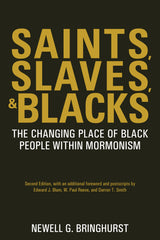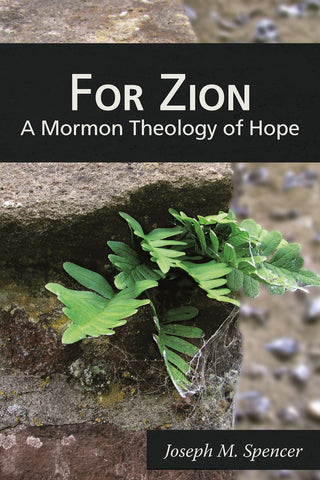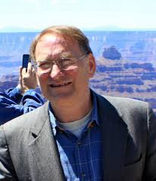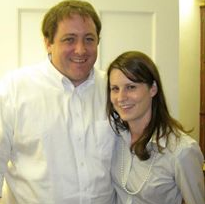News
FLASH SALE: Up to 74% off Women's History and Topics Titles March 01 2019

 “The authors connect ordinary lives with enduring themes.” $24.99 |

$25.99 |

$18.99 |

$18.99 |

$24.99 |
Print sale ends Sunday, 3/31/2019
|
$31.95
$22.37 |

|

|

|

|
FLASH SALE: Select titles up to 75% off! February 14 2019
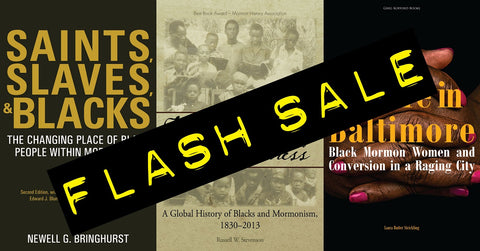
 “Here are riches that you won’t want to miss.” $18.99
|
“Led to a paradigm shift in my understanding of Mormon history.” $23.99
|
“Invaluable as a historical resource.” $26.99
|
Print sale ends Thursday, 2/28/2019
|
$20.95 |
$27.95 |
$32.95 |
Q&A with Laura Rutter Strickling for On Fire in Baltimore: Black Mormon Women and Conversion in a Raging City September 11 2018

Q: Will you give us a little background into your formal education and how it relates to this book.
A: I received an undergraduate degree from Brigham Young University way back in 1977, then, twenty years later, completed post-baccalaureate work in Spanish at Augusta State University. In between this time, our family of six lived in southern Spain for seven years where the kids attended Spanish schools in Rota, across the Bay of Cádiz. Later, back in the States, I taught high school Spanish in North Carolina until our four kids left home, then went on to do graduate work. I received an M.A. from the University of Maryland Baltimore County in Intercultural Communication, and a Ph.D. in Sociocultural Linguistics. My doctoral research focused on the impact of educator's attitudes toward students who speak African American English, and I developed a model that explains the process of reframing a linguistic mindset. This model shows that standard language ideology (in this case, the belief that Black English is poor English, instead of a language variation) is not easily modified, but requires incremental training, and the implementation of linguistically aware practices followed by analysis. I also completed a two-year post-doctoral position in Urban Education in Baltimore where we evaluated the efficacy of Turnaround interventions in low performing schools. In terms of writing On Fire in Baltimore, my academic preparation provided me with an interdisciplinary theoretical foundation regarding language, race relations, and intercultural difference; and living in the city provided me with day to day experience in an interracial neighborhood.
Q: How did this study come together and what were your goals with it?
A: Well, come together is probably a good description because it implies a process. Qualitative research can be fluid and take on twists and turns as the research unfolds. I began a study focused on recording the life and conversion of the African American women in my congregation—an endeavor that spanned over ten years and resulted in twenty-five recorded interviews and four hundred pages of transcription. But the interviews were more than data collection; they opened the door to sisterhood and sojourn into the Black community. Sitting side by side in their living room or at the kitchen table, these women would draw me into their narrative with Black vernacular, laughter, and tears. More than once I would find myself holding their hand as their eyes welled up from painful memories or smiling at their sarcasm as they described a family member. And my association did not end with the interviews; the women would invite me to family celebrations and birthdays or ask for rides across town to pick up prescriptions. They would call me out of the blue because they “had a feeling,” then tell me another story about their lives. These church sisters also let me know that they were interested in my work. “How are the stories coming?” some would ask as they passed me in the church halls. “We are praying for you,” they would tell me as the unfinished book advanced from months to years.
But our time together was not always easy; sometimes there were tense moments that were difficult to navigate. Sometimes I would find myself in a racialized snare that I could not resolve by intuition. A feminist theoretical approach obligated me to be mindful of these emotions and enabled me to adopt a reflective process aimed at exposing my biases and questioning my responses. It provided me with the theoretical underpinning to acknowledge that, as a researcher, I would naturally affect the research I do, but also, in the process, I would be affected by it. Keeping this in mind, I documented the evolution of my thoughts as I interacted with these Black women and as I attempted to peel back the layers of my racialized assumptions.
Q: You mentioned that what began as a linguistic study quickly turned into racially-entangled conversion narratives. Can you explain that a little further?
A: What I’m saying is that intersectionality became clearer to me. By intersectionality, I mean that socially constructed categories such as, race, class, and gender-hierarchy interrelate and come together to impact the degree of marginalization or healthy acceptance into a society. You cannot separate these Black women’s marginalized lives from their conversion stories. For example, Delilah talks about “the worst time in her life” when her husband pushed her to the floor, then held a gun to her head. After that, he beat her up, so she left him. Alone and without food for her children or electricity for the house, she went to her Baptist Church seeking help. Instead of help, she ended up losing twenty dollars. In anger and without resources, she yells at God, telling him that she would not go to church anymore—God would have to send a church to her. A few days later, she says “two White boys came knocking at my door, and I wondered, what are these White boys doing in this Black neighborhood?” Delilah says that her life changed after baptism into the Church of Jesus Christ.
But once Black women join the Latter-day Saints, they also have to reconcile that the Church denied them full access to full membership before 1978. Their membership was yet another layer of marginalization. The women in On Fire in Baltimore each have their own way of explaining the reason for this lack of access. Delilah, for example, researched the story of Black Mormon pioneer, Jane Manning James, and found comfort in Jane’s fortitude.
Q: Can you provide one or two specific examples from the book of stories that stood out to you in particular?
A: Every one of these Black sisters’ stories impacted me, but I can offer two examples. The first is found at the beginning of the book and was an experience that left me deeply reflective as to where I would take my work. In this excerpt, I am interviewing Ruth:
"I love doing these interviews," I explain, taking a stab at getting the interview started, "because I feel like the sisters are with me every day when I listen to their recorded voices and transcribe their words." Ruth smiles at me and nods her head, and I'm feeling confident in the work I'm doing. But my satisfaction is short lived, and I am quickly reminded of how fragile the interview process can be. With my next comment, I fall from academic grace onto uncertain interview ground. I tell Ruth that I have run across colleagues who were surprised to learn that there were African American Mormon women in Baltimore, and that they were interested in hearing their conversion stories. Without a hint of accusation and with her customary mild voice, Ruth asks, "Are you only interviewing African American women? Because I'm not African American. My father was White and my mother was Native American."
I catch my breath for one speechless moment as a wave of panic washes over me. I had assumed Ruth's racial identity. After years of theoretical study regarding the hegemonic construction and social complexities of identity, culture and race--how had I done that?
This experience sent me on a four-month journey researching race--in particular, the racialization of America and the formation of whiteness.
The second excerpt is found toward the end of the book and shows the reader how this work is more than a series of interviews or a collection of conversion stories. It illustrates how my life became intertwined with the Black sisters in my congregation. At the time of this story, I was the choir director and Clara was a member of the choir:
“[A]s I went to sit down Clara appeared out of nowhere. ‘Could we meet together for ten minutes some time?’
Thinking that this must be a question about the choir, I answered, ‘How about now?’ and followed her out the chapel door into the hall. But when she kept on walking, I realized that she must have wanted to meet more privately. Clara led me into a classroom and closed the door.
‘Can we have a prayer?’ She was asking me. In the split second that I automatically said yes, I was also wondering which one of us would be praying and for what purpose. But I was not left to ponder long because Clara immediately grabbed my hands, facing me. She pulled me close and started praying out loud in a strong voice. But she had crossed her arms in front of her chest so that she was holding onto my hands, right to right and left to left. I did not hear what Clara was saying at first, because I was trying to figure out the meaning of this hand position.
She was praying for me. ‘Heavenly Father, thank you for Sister Strickling. She was inspired to come today. Help heal her with the treatment she is going through. Thank her Heavenly Father. Heal her. Heal her Heavenly Father.’”
Q: In what ways did this study challenge your view of whiteness, and how race impacts your own perspective?
A: Generally, we do not become “raced” until we experience a racialized encounter. In other words, because race is a social construct, we are not aware of our whiteness, blackness, or browness, until someone’s behavior points it out. Several of the Black women in this book told me that they did not realize they were Black until they got their first paycheck and went shopping only to be told that Black people could not try on clothes in that store. Growing up in rural Oregon, I did not have many racialized experiences, and living in Spain, I viewed my day to day encounters with Spaniards in terms of cultural or linguistic difference. Baltimore was a good place for me to learn about racialized behaviors.
A: What are you hoping that readers will gain from this book?
That the last shall be first and the first shall be last. In other words, I'm hoping that these stories will inspire readers of all races to question their assumptions. Lorraine Hansberry, author, and the first Black playwright to write a play that was performed on Broadway, said: [Do you want to know about] love . . . and life? Ask those who have tasted of it in pieces rationed out by enemies . . . Ask . . . those who have loved when all reason pointed to the uselessness and fool-hardiness of love. Out of the depths of pain we have thought to be our sole heritage in this world—oh, we know about love! Perhaps we shall be the teachers when it is done.[1]
Today, social discourse on race and racism persists, in the news, on talk radio and social media, but how do we go about being the teachers and the students that Hansberry described? What quality of relationship would foster this reciprocity? This book is really the beginning of that discussion.
__________
[1] Lorraine Hansberry, To Be Young, Gifted and Black: A Portrait of Lorraine Hansberry in Her Own Words, 104. Hansberry (1930–1965) playwright and author, wrote A Raisin in the Sun (1959) and was the first Black playwright to write a play that was performed on Broadway.
Preview a sample of On Fire in Baltimore
Upcoming speaking and signing events:
Tue Oct 23 at 6:30pm | Weller Book Works (SLC) | RSVP
Thu Oct 25 at 7:00 pm | Writ & Vision (Provo) | RSVP
Fri Oct 26 at 6:30 pm | Thunderbird Books (Ephraim) | RSVP
Author Spotlight: Jessie L. Embry June 14 2018

Conversation with Jessie L. Embry
Jessie L. Embry is a former associate director of the Charles Redd Center for Western Studies and an instructor of history at Brigham Young University. She is the author of several books and over eighty articles dealing with Mormon, western, and Utah history. She is currently the editor of the Journal of Mormon History.
Q: Can you give us a little background into your academic training and your interest in Mormon studies?
A: When I graduated from high school, I thought I would become a secondary school history teacher. After a number of twist and turns, I ended up as Brigham Young University majoring in history with a goal to study Native Americans and teach college. Ted Warner told me that I was right gender but wrong color. Still, he mentored me through a senior seminar paper on Indian relocation. He also gave me a scholarship for a master’s program. Then Tom Alexander hired me as a research assistant to study Wilford Woodruff. As we read books about spiritual experiences and Woodruff’s diaries, I learned research skills. Also as a graduate student, I took an oral history class from Gary Shumway. When I could not think of a thesis topic, Leonard Arrington suggested Relief Society grain storage. It sounded boring, but I learned that it was the perfect case study to learn about the changing roles of women in the LDS Church. After a mission (that I went on because I could not find a job), James B. Allen hired me to work on the Genealogical Society history. Following an Utah State Historical Society preservation internship, Tom hired me to direct the oral history program at the Charles Redd Center for Western Studies. He supported my efforts to plan oral history projects and write books and articles. Lavina Fielding Anderson helped me become a better writer. And James B. Allen allowed me to teach history classes and other department chairs continued to assign me classes.
That is the long answer. The short answer is I stumbled into history and Mormon studies, but my great mentors peaked my curiosity and taught me the value of understanding the LDS past.
Q: You have written books and articles on a wide variety of topics from Mormon polygamy, race and Mormonism, Mormon studies historiography, regional histories, and more. If you were given unlimited research funding and open access to the archives, what topic would you pick and why?
A: Sometimes people ask me what my favorite project is, and my answer is the one I am working on. Kent Powell told me that I could take the most boring subject and make it interesting. As with my master’s thesis, I have been open to suggestions and then dove in. At times in my career unlimited research funding would have been great, but that is not a problem any more. And while open access would always be nice, I am not sure that there is always the information that I would want to find.
But to answer the question, I would like to research why changes have taken place in the LDS Church and what motivated those changes. Along the same lines, I would like to know if there is a cause and effect between what happened and what was going on in the United States and the world. Since that is pretty abstract, let me give some examples. I researched LDS recreation programs which included all-church sports tournaments and dance festivals. I learned a lot about how those programs developed and why they were discontinued. I learned how the programs affected the buildings. I have some answers of why the changes, but I wish I had more. When I worked for Gordon Irving and the James Moyle Oral History Project in the late 1970s, I interviewed women about their reactions to the Women’s Lib Movement of the time. I would like to know more about the reactions of Church leaders and members to that movement. And that is my current project.
Q: As the current editor of the Journal of Mormon History, you have come across articles by numerous up-and-coming scholars of Mormonism. What trends are you seeing emerge from younger scholars and where do you imagine the future of Mormon studies to be headed?
A: I am trained as a historian, but I also learned from other disciplines. That is what I taught BYU students, and it is very gratifying to see former students become great historians. Many of them and the younger scholars are more focused on Mormon studies/religious studies than just straight history. I think that Mormon studies will include more comparative studies and focus more on theories. I hope in that change that young scholars remember that history is stories. I hope they will gather the stories and then look for the theories that might work rather than trying to make the data fit the theories.
That being said, I am excited that there are so many young scholars interested in the Mormon past. I started my career during the New Mormon History period. Because of the negative reactions, I believe that we lost a whole generation of people studying Mormon history/Mormon studies. It is refreshing to know that we can overcome what Roger Launius called the graying of the Mormon History Association. It is good to see new faces, and I look forward to publishing these scholars in the Journal of Mormon History. I learn so much from them.
Thanks, Jessie!
 Mormon Polygamous Families: Life in the Principle
Mormon Polygamous Families: Life in the Principle
By Jessie L. Embry
318 pages
$24.95 paperback
Newell G. Bringhurst Speaking Events April 13 2018

| Date & Time | Location |
| Tue April 24 at 5:30 PM | Benchmark Books, SLC |
| Thur April 26 at 7:00 PM | Writ & Vision, Provo |
| Fri April 27 at 5:00 PM | Main Street Books, Cedar City |
| Sat April 28 at 4:00 PM | Home of Doug Bowen, St. George |

NOW AVAILABLE
“An excellent treatment of an important part of American religious life. Bringhurst succeeds in showing the Mormons as a microcosm of the American population.” — The American Historical Review
“In many regards Bringhurst established the terms on which subsequent scholars would engage race and Mormonism” — W. Paul Reeve, author of Religion of a Different Color: Race and the Mormon Struggle for Whiteness
Sign up for our newsletter to stay informed
about future events and book releases
Five Times Mormons Changed Their Position on Slavery March 28 2018

Mormonism and Black Slavery:
Changing Attitudes and Related Practices, 1830–1865
By Newell G. Bringhurst
Mormon attitudes and practices relative to black slavery shifted over the course of the first thirty-five years of the Latter-day Saint movement, evolving through five distinct phases.
Phase 1 – Opposition to Slavery in the Book of Mormon
Initially Joseph Smith expressed strong opposition to slavery through the pages of the Book of Mormon. While not specifically referring to black people, Mormonism’s foundational work asserted that “it was against [Nephite] law” to enslave those less favored than themselves, namely the dark Lamanites (Alma 27:9; Mosiah 2:13). In fact, the idolatrous Lamanites were the ones who practiced slavery, making repeated efforts to enslave the light-skinned, chosen Nephites. Lamanite slaveholding was cited as proof of this people’s “ferocious and wicked nature” (Alma 50:22). Nephite resistance to the Lamanites was described as a struggle for freedom from bondage and slavery.
Phase 2 –Detachment towards Slavery in Ohio and Missouri
Mormon attitudes toward slavery entered a second phase of deliberate detachment following the formal organization of the Church in 1830. Through the pages of the Church’s official newspaper, the Evening and Morning Star, Joseph Smith and others avoided discussion of this increasingly controversial topic. No mention was made of Book of Mormon verses condemning slavery. A major reason for such deliberate detachment was the establishment of Mormonism’s Zion in Missouri, a slave state. Church officials sought to disassociate themselves from the fledgling Abolitionist movement.
Despite this, the Church found itself compelled to speak out on the issue on two important occasions. The first involved Joseph Smith’s “Revelation and Prophecy on War” brought forth on 25 December 1832 and ultimately canonized as Section 87 in the Doctrine and Covenants. In this apocalyptic document, Smith prophesized that “wars…will shortly come to pass, beginning at the rebellion of South Carolina [and]…poured out on all nations” (D&C 87:1–2). It further declared that the “slaves will rise up against their masters, who shall be marshalled and disciplined for war” (D&C 87:4). Given its explosive implications, this revelation was not disclosed to the general Church membership until two decades later.
By contrast, a second Mormon statement, “Free People of Color” written by W. W. Phelps and published in the July 1833 issue of the Evening and Morning Star, received immediate exposure resulting in dire consequences. Prompting Phelps’s statement was a dramatic four-fold increase in the number of Mormons settling in Jackson County. The article’s stated purpose was “to prevent any misunderstanding . . . respecting free people of color, who may think of coming to . . . Missouri as members of the Church.”[1] However, it had the opposite effect, angering local non-Mormons who expelled the Latter-day Saints from Jackson County.
Phase 3 – Pro-slavery Sympathies in Missouri
By the mid 1830s, Church attitudes toward slavery shifted yet a third time, Church spokesmen affirming support for slavery. In August 1835, the Church issued an official declaration stating that it was not “right to interfere with bond-servants, nor baptize them contrary to the will and wish of their masters” nor cause “them to be dissatisfied with their situations in this life.” Ultimately this statement was incorporated into the Doctrine and Covenants as Section 134. Eight months later, in April 1836, Joseph Smith reaffirmed Mormon pro-slavery sympathies through a lengthy discourse published in the official Latter-day Saints Messenger and Advocate. Smith raised the specter of “racial miscegenation and possible race war” if abolitionism prevailed.[2] He further stated that the people of the North have no “more right to say that the South shall not hold slaves, than the South have to say the North shall.”[3] He referenced the Old Testament, specifically the “decree of Jehovah” that blacks were cursed with servitude.[4] Other church spokesmen echoed Smith’s sentiments, in particular Oliver Cowdery and Warren Parrish. This Mormon shift reflected an increased Mormon presence in the slave state of Missouri during the late 1830s, along with a desire to carry the Mormon message to potential converts in the slaveholding South. But most importantly, it represented strong Mormon reaction against the establishment of a chapter of the American Anti-slavery society in the Mormon community of Kirtland Ohio.
Phase 4 – Anti-slavery Position in Nauvoo
By the early 1840s Smith and his followers shifted their position yet a fourth time, assuming a strong anti-slavery position, most evident during the Mormon leader’s 1844 campaign for U.S. president. In his “Views on the Powers and Policy of the Government of the United States” Smith advocated the abolition of slavery through gradual emancipation and colonization of the freed blacks abroad.[5] He called for the “break down [of] slavery” and removal of “the shackles from the poor black man” through a program of compensated emancipation financed through the sale of public lands.[6] Smith predicted that his proposal could eliminate slavery by 1850. Motivating this changing position were two major factors: one was the Mormon’s forced expulsion from the slave state of Missouri in 1838-39. The second involved demographics, namely the fact that the majority of church members hailed from non-slaveholding regions north of the Mason-Dixon line and from Great Britain. By contrast, a relatively limited number of new converts were drawn from the slaveholding South.
Phase 5 – Pro-slavery Position in Utah Territory
Mormon attitudes and related practices relative to slavery shifted yet a fifth and final time following the death of Joseph Smith in 1844 with the emergence of Brigham Young as the principal leader of the Latter-day Saints who migrated west. Young’s evolving position represented “a bundle of contradictions.”[7] Initially, he advocated a “free soil”[8] stance in a June, 1851, sermon, rhetorically stating, “shall we lay a foundation for Negro slavery? No, God forbid!”[9] Six months later in the wake of his appointment as Utah Territorial Governor, Young retreated from this position. Despite his assertion that “my own feelings are that no property can or should exist in slaves,” Young called on the territorial legislature adopt a form of benevolent indentured servitude to regulate Utah’s small but visible black population.[10] Two weeks later, addressing that same body, he proclaimed himself “a firm believer in slavery,”[11] urging legalization of the Peculiar Institution.[12] On February 4, 1952, the Utah Territorial Legislature passed “An Act in Relation to Service” which Young signed into law, making Utah the only Western territory to allow black slavery. Justifying his action, Young delivered a lengthy discourse in which he promoted a direct link between black slavery and black priesthood denial—the latter practice which he announced publicly for the first time. He further asserted that the two proscriptions were both intertwined and divinely sanctioned.
Four factors prompted Young to promote “An Act in Relation to Service.” First, the measure represented a response to the presence of sixty to seventy black slaves in the territory belonging to twelve Mormon slave owners. Among the most prominent were Apostle Charles C. Rich, William H. Hooper (an important Mormon merchant who served as Utah’s Territorial delegate to Congress), and Abraham O. Smoot, Salt Lake City’s first mayor. Second, Young hoped to secure southern support for Utah statehood. Young noted that there were “many [brethren] in the South with a great amount [invested] in slaves” who might migrate to the Great Basin if their slavery property were protected by law.[13]
Of crucial importance in motivating the Mormon leader was a third factor: his strong, unyielding belief that blacks were inherently inferior to whites in all respects and thus naturally fit for involuntary servitude. He accepted, uncritically, the traditional biblical genealogy that present-day Africans came through the so-called accursed lineage of Canaan and Ham back to Cain, thereby providing divine sanction to their servile condition. Further legitimizing black inferiority was the denial of priesthood ordination to black males, which Young affirmed as “a true eternal [principle] the Lord Almighty has ordained.” He stated: “If there never was a prophet or apostle of Jesus Christ spoke it before, I tell you, this people that are commonly called negroes are the children of old Cain, I know they are, I know that they cannot bear rule in the priesthood.”[14]
A fourth, seemingly counterintuitive factor activated Young: his desire to discourage slaveholding in the territory. A careful reading of the statute’s provisions indicates that it consisted primarily of rules to control and restrict slaveholders, and only, incidentally, proscriptions on black slaves themselves. For example, the act required Utah slaveholders to prove that servile blacks had entered the territory “of their own free will and choice.”[15] It also stated that slaveholders could not sell their slaves or remove them from the territory without the so-called servants explicit consent. In general, “An Act in Relation to Service” contrasted sharply with Southern slaveholding statutes in that it was more akin to the practice of indentured servitude. Later that same year, Young reflected on the act’s impact, claiming that it had “nearly freed the territory of the colored population.”[16] Ultimately, Utah Territorial slavery was completely outlawed through a federal statute enacted in 1862, affecting not just the Mormon-dominated region but all other federal territories as well.
Conclusion
The LDS Church’s ever shifting encounter with the institution of black slavery during the thirty-five years from 1830 to 1865 represents a complex, often contradictory odyssey. This perplexing journey profoundly affected Mormonism’s relationship with black people in general. While the number of blacks that Latter-day Saints actually held in bondage was miniscule, the fact that Brigham Young sanctioned the practice of black slavery in conjunction with his imposition of black priesthood and temple denial underscores slavery’s seminal impact on the now-defunct proscription on black people—such practice viewed as Church doctrine for over one hundred and twenty-five years.
 Saints, Slaves, and Blacks: The Changing Place of Black People Within Mormonism, 2nd ed.
Saints, Slaves, and Blacks: The Changing Place of Black People Within Mormonism, 2nd ed.
By Newell G. Bringhurst
Available April 10, 2018
Pre-order today
[1] Evening and Morning Star, July 1833.
[2] Joseph Smith, “Letter to the Editor,” Latter Day Saints Messenger and Advocate, April 1836
[3] Smith, “Letter to the Editor.”
[4] Smith, “Letter to the Editor.”
[6] Smith, “Views on the Powers and Policy of the Government of the United States.”
[12] Peculiar Institution is another term for Black Slavery.
[13] “Speech [sic] by Gov. Young in Counsel on a Bill relating to the Affican [sic] Slavery.”
[14] Brigham Young, Discourse, February 5, 1852, Bx 1 Fd. 17, Brigham Young Papers, LDS Church Historical Department.
[15] “AN ACT in relation to Service,” Acts, Resolutions and Memorials of the Legislative Assembly of the Territory of Utah (Salt Lake City, 1855), 160–62.
[16] Brigham Young, “Message to the Joint Session of the Legislature,” 13 December 1852, Brigham Young papers.
Q&A with Newell G. Bringhurst for Saints, Slaves, and Blacks, 2nd ed. March 14 2018

by Newell G. Bringhurst
Available April 10, 2018
Pre-order Your Copy Today
Q: When it was first published (1981), was Saints, Slaves and Blacks the first comprehensive book-length study published on the topic of race within Mormonism? Give us a timeline and little information behind your decision to write the book?
A: Yes, Saints, Slaves, and Blacks was the first comprehensive book-length study published on the topic of race within Mormonism. Although an earlier monograph, Stephen G. Taggart’s cursory Mormonism’s Negro Policy: Social and Historical Origins published in 1970, postulated that Joseph Smith implemented the black priesthood ban during the 1830s in response to Mormon difficulties in the slave state of Missouri. My own work which rejected Taggert’s limited “Missouri Thesis” is much more comprehensive. It took eleven years to complete, going through a two-stage process. The first stage involved producing a doctoral dissertation at the University of California, Davis, with the research and writing taking five years to complete, from 1970 to 1975. The second stage involved transforming the dissertation into a publishable book. This process involving further research and extensive re-writing that took another six years, from 1975 to 1981. Prompting my 1970 choice of this topic for a dissertation was the intense controversy surrounding the LDS Church’s priesthood and temple ban on black members, during the turbulent decade of the 1960s.
Q: What was the initial reception of Saints, Slaves, and Blacks when it was first published? Did its reception change over time?
A: Initial reception of the book can be best described as “mixed.” It attracted limited notice both within and outside the Mormon community. The Mormon Church’s owned-and-operated Deseret News completely ignored it, as did all other official LDS publications, including the academically-oriented BYU Studies. The book was the victim of bad timing given its publication a mere three years following the Church’s 1978 revelation that reversed the policy on race-based priesthood and temple restrictions. Mormons of all stripes were anxious to forget the now-embarrassing practice of black priesthood and temple denial, previously promoted as essential doctrine.
Reviews of the book were also mixed. On the negative side, one scholar, an active Latter-day Saint, who had written on black slavery in Utah, excoriated the volume for what he perceived as its “extreme anti-Mormon bias” claiming that it “continually [berated] Mormonism for blatant racism.” By contrast other Mormon academics offered a more measured response. Stanford J. Layton, then-editor of the Utah Historical Quarterly, praised the volume’s “heft and feel of scholarship …apparent on every page,” and a second, Lester E. Bush, Jr., who had written extensively on blacks within Mormonism, affirmed the validity of its central thesis—i.e. that the priesthood ban was the product of an emerging sense of Mormon “whiteness,” as contrast to the blackness assigned Cain, Ham, and other so-called Biblical counterfigures. Non-Mormon scholars also weighed in with generally positive evaluations pointing to the work’s “wealth of primary research,” and its “full discussion” of the “origins and development of Mormon racial doctrines.”
More recently other scholars who have written on race within Mormonism have affirmed the validity of the volume’s central thesis that the black ban emerged largely as the byproduct of an emerging sense of Mormon ethnic whiteness, wherein Latter-day Saints viewed themselves as a divinely chosen lineage—the literal descendants of the House of Israel, while proclaiming blacks a divinely cursed race given their alleged descent from accursed Biblical counterfigures—Cain, Ham, and Canaan.
Q: Briefly explain Mormon shifts in views on slavery from the time of the of the Saints sojourn in Missouri in the 1830s down to early 1850s in the wake Mormons’ migration to Utah or the Great Basin?
A: Latter-day Saint views on slavery dramatically shifted over the period from the 1830s to the early 1850s. Initial views on slavery as manifested through the pages of the Book of Mormon were in opposition, specifically asserting that “it was against [Nephite] law…” to hold slaves, while it was the dark, idolatrous Lamanites who practiced slavery.
From the formation of the Church in 1830 until 1844, Mormon attitudes toward slavery went through three distinct phases. Initially Joseph Smith and other Church leaders avoided any and all direct discussion of this increasingly controversial topic during the early 1830s. No mention was made of those Book of Mormon verses condemning slavery and/or human bondage. By the mid-1830s, however, the Church affirmed support for slavery in an official 1835 statement. Such change reflected an increased Mormon presence in the slave state of Missouri, a desire to carry the Mormon message to potential converts in the slaveholding South, and also by a desire to avoid identifying with the fledgling abolitionist movement.
By the early 1840s Smith and his followers shifted their position yet a fourth time, assuming a strong anti-slavery position, most evident during the Mormon leader’s abortive 1844 campaign for president. Motivating this change were two major factors. First was the Mormon’s forced expulsion from the slave state of Missouri in 1838–39. Second, the vast majority of church members hailed from non-slaveholding regions north of the Mason-Dixon line and from Great Britain, whereas a relatively limited number of new converts were drawn from the slaveholding South.
After 1844, Mormon attitudes toward slavery changed yet a fifth time, assuming a pro-slavery stance. Following the Mormon migration to the Great Basin, the Mormon-dominated Utah territorial legislature legalized the practice of black slavery, doing so at the direction of Brigham Young in 1852. Young’s rationale was driven by his belief in black racial inferiority, further reflected in his fateful decision to implement a ban of black priesthood ordination and temple ordinances.
Q: What were the primary reasons behind Brigham Young’s decision to impose the priesthood/temple restrictions on black Latter-day Saints?
A: Two major factors drove Brigham Young to implement the Church’s black ban by 1852. Most important was a developing sense of Mormon “whiteness,” wherein the Latter-day Saints identified themselves as divinely chosen people, reaffirmed by a belief that they were of Abrahamic descent, specifically the favored linage of Ephraim. Conversely these same Saints viewed blacks to be a divinely cursed race due to their alleged descent from the accursed Biblical counterfigures of Cain, Ham, and Canaan. The second factor motivating Young was his embrace of black slavery, which he considered divinely sanctioned. Thus, as Utah Territorial governor he called for its legalization—this occurring in 1852, thereby making Utah the only western territory to legalize black slavery. Furthermore, Young in calling for this statute claimed a divinely-sanctioned link between black servitude and black priesthood denial.
Despite the abolition of black slavery following the Civil War, the Church continued to deny its black members priesthood ordination and access to temple ordinances, such practice continuing until 1978. Several factors enabled Church leaders to both justify and perpetuate the practice. First, and perhaps most important, was acceptance of the historical myth that Joseph Smith was the actual author of the ban—such process starting immediately following the death of Brigham Young. Second was the use of the Pearl of Great Price as a scriptural proof text to justify the practice, specifically the crucial Book of Abraham verse suggesting that blacks were “cursed as pertaining to the priesthood.” A third factor was an increased sense of the Mormons’ ethnic self-identity as an “Israelite people” most favored by God. These same Saints further believed that they stood at the top of a divinely sanctioned ranking of all the lineages of humankind. Whereas blacks, as the accursed “seed of Cain,” stood at the bottom.
Q: What factors led to the rescinding of the priesthood/temple ban for black Mormons in 1978?
A: Several factors led to the lifting of the priesthood/temple ban in 1978. First of all, the ban was undermined by the Civil Rights movement, which gained momentum following World War II, reaching its peak in the late 1960s and early 1970s. Civil Rights activists assailed the ban in protests during the 1960s. A second factor involved the emergence of prominent critics within the Church who raised their voices in opposition to the ban. Particularly prominent were sociologist Lowry Nelson and Sterling M. McMurren, a University of Utah Professor and U. S. Commissioner of Education under John F. Kennedy. Thirdly, the increasingly offensive ban came under intense scrutiny thanks to the prominence of three Latter-day Saints as national political figures. They were Michigan Governor George Romney—a Republican Presidential contender in 1968, Stewart Udall, who served as Secretary of Interior from 1961 to 1969, and US Congressman Morris Udall, a major Democratic Presidential candidate in 1976.
Of primary importance in ending to the ban was a fourth development—the dramatic growth of Mormonism abroad, particularly in non-white regions of Asia, the South Pacific, and Latin America. The diversification of Mormonism’s racial ethnic composition undermined traditional Mormon white ethnocentric ideas and concepts used to justify the ban. The final push for change arrived with the emergence of Spencer W. Kimball as LDS Church President. Kimball was increasingly concerned about the Church’s limited ability to expand into those parts of the world with large non-white populations, most especially Brazil with its large bi-racial population and sub-Sahara Africa, overwhelmingly black. Thus, all the elements facilitating the lifting of the ban were in place by June 1978.
Q: How have Mormon attitudes on this topic changed over the past few years? How is this reflected in contemporary scholarship?
A: In recent years, Latter-day Saints of all stripes, from the Church’s top leaders all the way down to rank-and-file members have become increasingly willing to confront various aspects of Mormonism’s problematic racial past. The Church’s official “Race and the Priesthood” Gospel Topics essay issued in December 2013 reflects such openness. The essay ascribed the priesthood/temple ban to racism rather than divine revelation. It singles out Brigham Young as the primary author of the ban, motivated by the “racial discriminations and prejudice” of his day. The essay further repudiates the Church’s decades old teachings of divine curses placed on black people, and white racial superiority, and condemnation of interracial marriages.
Such openness has been further reflected in the flood of books and articles dealing with varied aspects of Mormonism’s problematic racial past; such works produced by a corps of outstanding scholars both within and outside of the Church. Most notable is a continuing stream of seminal studies produced over the past forty years. Among the most outstanding are those written individuals both within and outside the Church, most especially: Jessie Embry, Armand Mauss, Russell Stevenson, Angela Pulley Hudson, W. Paul Reeve, and Max Muller. The outpouring of significant scholarship on this topic shows little signs of abating any time soon.
Pre-order Your Copy Today
Twelve Days of Kofford 2017 November 21 2017
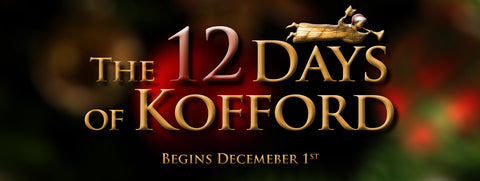
Greg Kofford Books is once again pleased to offer twelve days of discounted holiday shopping from our website!
HERE IS HOW IT WORKS: Every morning from Dec 1th through the 12th, we will be posting a DISCOUNT CODE on our Facebook or Twitter pages. Use this discount code on the corresponding day to receive 30% off select titles. The final day will be an e-book flash sale on Amazon.com.
To help you plan, here are the dates, titles, and sale prices we will be offering beginning Dec 1st. These sales are limited to available inventory. You must follow our Facebook or Twitter pages to get the discount code. Orders over $50 qualify for free shipping. Customers in the Wasatch Front area are welcome to pick orders up directly from our office in Sandy, UT.
Day 1 — Brant Gardner collection
 |
Second Witness, Vol 1: First Nephi $39.95 hardcover |
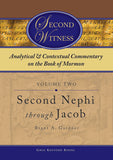 |
Second Witness, Vol 2: Second Nephi through Jacob $39.95 hardcover |
 |
Second Witness, Vol 3: Enos through Mosiah $39.95 hardcover |
 |
Second Witness, Vol 4: Alma $49.95 hardcover |
 |
Second Witness, Vol 5: Helaman through Nephi $39.95 hardcover |
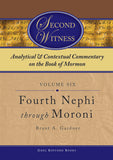 |
Second Witness, Vol 6: Fourth Nephi through Moroni $39.95 hardcover |
 |
The Gift and the Power: Translating the Book of Mormon $34.95 paperback |
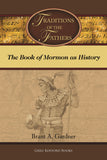 |
Traditions of the Fathers: The Book of Mormon as History $34.95 paperback |
 |
The Garden of Enid: Adventures of a Weird Mormon Girl $22.95 paperback |
 |
The Garden of Enid: Adventures of a Weird Mormon Girl $22.95 paperback |
Day 3 — The Mormon Image in Literature
 |
The Mormoness; Or, The Trials of Mary Maverick: $12.95 paperback |
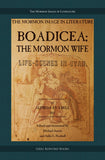 |
Boadicea; the Mormon Wife: Life Scens in Utah $15.95 paperback |
 |
Dime Novel Mormons $22.95 paperback |
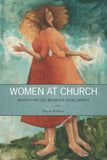 |
Women at Church: Magnifying LDS Women's Local Impact $21.95 paperback |
 |
Mormon Women Have Their Say: Essays from the Claremont Oral History Collection $31.95 paperback |
 |
Voices for Equality: Ordain Women and Resurgent Mormon Feminism $32.95 paperback |
 |
Joseph Smith's Polygamy, Vol 1: History $34.95 paperback |
 |
Joseph Smith's Polygamy, Vol 2: History $34.95 paperback |
 |
Joseph Smith's Polygamy, Vol 3: Theology $25.95 paperback |
 |
Joseph Smith's Polygamy: Toward a Better Understanding $19.95 paperback |
 |
Modern Polygamy and Mormon Fundamentalism: The Generations after the Manifesto $31.95 paperback |
 |
Mormon Polygamous Families: Life in the Principle $24.95 paperback |
 |
Prisoner for Polygamy: The Memoirs and Letters of Rudger Clawson at the Utah Territorial Penitentiary, 1884–87 $29.95 paperback |
 |
Who Are the Children of Lehi? DNA and the Book of Mormon $15.95 paperback |
 |
“Let the Earth Bring Forth”: Evolution and Scripture $15.95 paperback |
 |
Mormonism and Evolution: The Authoritative LDS Statements $15.95 paperback |
 |
Parallels and Convergences: Mormon Thought and Engineering Vision $24.95 paperback |
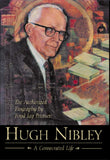 |
Hugh Nibley: A Consecrated Life $32.95 hardcover |
 |
“Swell Suffering”: A Biography of Maurine Whipple $31.95 paperback |
 |
William B. Smith: In the Shadow of a Prophet $39.95 paperback |
 |
LDS Biographical Encyclopedia, 4 Vols $259.95 paperback |
 |
The Man Behind the Discourse: A Biography of King Follett $29.95 paperback |
 |
Liberal Soul: Applying the Gospel of Jesus Christ in Politics $22.95 paperback |
 |
A Different God? Mitt Romney, the Religious Right, and the Mormon Question $24.95 paperback |
 |
Common Ground—Different Opinions: Latter-day Saints and Contemporary Issues $31.95 paperback |
 |
Even Unto Bloodshed: An LDS Perspective on War $29.95 paperback |
 |
War & Peace in Our Time: Mormon Perspectives $29.95 paperback |
 |
The End of the World, Plan B: A Guide for the Future $13.95 paperback |
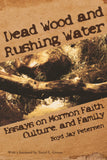 |
Dead Wood and Rushing Water: Essays on Mormon Faith, Culture, and Family $22.95 paperback |
 |
Mr. Mustard Plaster and Other Mormon Essays $20.95 paperback |
 |
Writing Ourselves: Essays on Creativity, Craft, and Mormonism $18.95 paperback |
 |
On the Road with Joseph Smith: An Author's Diary $14.95 paperback |
 |
Hearken O Ye People: The Historical Setting of Joseph Smith's Ohio Revelations $34.95 hardcover |
 |
Fire and Sword: A History of the Latter-day Saints in Northern Missouri, 1836–39 $36.95 hardcover |
 |
A House for the Most High: The Story of the Original Nauvoo Temple $29.95 paperback |
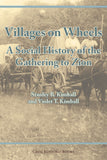 |
Villages on Wheels: A Social History of the Gathering to Zion $24.95 paperback |
 |
Mormonism in Transition: A History of the Latter-day Saints, 1890–1930, 3rd ed. $31.95 paperback |
Day 11 — International Mormonism
 |
Tiki and Temple: The Mormon Mission in New Zealans, 1854–1958 $29.95 paperback |
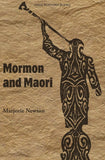 |
Mormon and Maori $24.95 paperback |
 |
The Trek East: Mormonism Meets Japan, 1901–1968 $39.95 paperback |
 |
From Above and Below: The Mormon Embrace of Revolution, 1840–1940 $34.95 paperback |
 |
The History of the Mormons in Argentina $24.95 paperback |
 |
For the Cause of Righteousness: A Global History of Blacks and Mormonism, 1830–2013 $32.95 paperback |
Twelve Days of Kofford Christmas Sale 2016 November 30 2016

MERRY CHRISTMAS FROM GREG KOFFORD BOOKS
Greg Kofford Books is pleased to announce our annual holiday sale on select popular titles beginning December 1st – December 12th.
Here's how it works: at the stroke of midnight each day, a new blog post will go live on our website listing that day's special offerings along with a discount code that you can enter at check-out to get the holiday price. It's that simple. We will also be posting the daily offering and discount code on our Facebook page at 7am.
*Orders over $50 qualify for free shipping (continental U.S. customers only). Local Utah customers can stop by our office in Sandy to pick up their orders as well. Holiday inventory on some titles may be limited, so be sure to take advantage of the daily sale early.*
To help you plan in advance, here are our scheduled sales:
Day 1 — Brant Gardner titles
 |
Second Witness: Analytical & Contextual Commentary on the Book of Mormon series
|
 |
The Gift and Power: Translating the Book of Mormon |
 |
Traditions of the Fathers: The Book of Mormon as History Best Religious Non-fiction Award, Association for Mormon Letters |
Day 2 — Adam Miller titles (essays in Mormon theology)
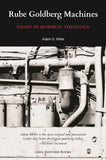 |
Rube Goldberg Machines: Essays in Mormon Theology Retail $18.95 |
 |
Future Mormon: Essays in Mormon Theology Retail: $18.95 |
Day 3 — Personal Essays
 |
Dead Wood and Rushing Water: Essays on Mormon Faith, Culture, and Family Retail: $22.95 |
 |
Mr. Mustard Plaster and Other Mormon Essays by Mary Lithgoe Bradford Retail: $20.95 Sale price: $14.67 |
 |
Writing Ourselves: Essays on Creativity, Craft, and Mormonism Retail: $18.95 |
Day 4 — Blake T. Ostler titles
 |
Exploring Mormon Thought series by Blake T. Ostler 30% off each title |
 |
Fire on the Horizon: A Meditation on the Endowment and Love of Atonement Retail: $17.95 |
Day 5 — Contemporary Studies in Scripture
 |
Authoring the Old Testament: Genesis — Deuteronomy Retail: $26.95 |
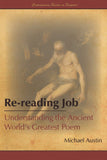 |
Re-reading Job: Understanding the Ancient World's Greatest Poem Retail: $20.95 |
 |
Search, Ponder, and Pray: A Guide to the Gospels Retail: $27.95 |
 |
Beholding the Tree of Life: A Rabbinic Approach to the Book of Mormon Retail: $21.95 |
 |
The Vision of All: Twenty-five Lectures on Isaiah in Nephi's Record Retail: $25.95 |
Day 6 — International Mormonism
 |
The Trek East: Mormonism Meets Japan, 1901–1968 Retail: $39.95 |
 |
Mormon and Maori Retail: $24.95 Best International Book Award, Mormon History Association |
 |
Tiki and Temple: The Mormon Mission in New Zealand, 1854–1958 Retail: $29.95 Best International Book Award, Mormon History Association |
 |
For the Cause of Righteousness: A Global History of Blacks and Mormonism, 1830–2013 Retail: $32.95 Best Book Award, Mormon History Association |
 |
The History of the Mormons in Argentina Retail: $24.95 |
 |
From Above and Below: The Mormon Embrace of Revolution, 1840 – 1940 Retail: $34.95 Best International Book Award, Mormon History Association |
Day 7 — Polygamy titles
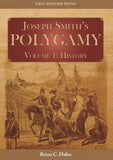 |
Joseph Smith's Polygamy: History and Theology Now in paperback! 30% off each title |
 |
Joseph Smith's Polygamy: Toward a Better Understanding Retail: $19.95 |
 |
Modern Polygamy and Mormon Fundamentalism: The Generations after the Manifesto Retail: $31.95 Best Book Award, John Whitmer Historical Association |
 |
Mormon Polygamous Families: Life in the Principle Retail: $24.95 |
 |
Prisoner for Polygamy: The Memoirs and Letters of Rudger Clawson at the Utah Territorial Penitentiary, 1884–87 Retail: $29.95 |
Day 8 — Contemporary Issues
 |
Women at Church: Magnifying LDS Women's Local Impact Retail: $21.95 |
 |
Common Ground—Different Opinions: Latter-day Saints and Contemporary Issues Retail: $31.95 |
 |
The Liberal Soul: Applying the Gospel of Jesus Christ in Politics Retail: $22.95 |
 |
Voices for Equality: Ordain Women and Resurgent Mormon Feminism Retail: $32.95 |
Day 9 — Biography
 |
Hugh Nibley: A Consecrated Life Retail: $32.95 Best Biography Award, Mormon History Association |
 |
“Swell Suffering”: A Biography of Maurine Whipple Retail: $31.95 Best Biography Award, Mormon History Association |
 |
William B. Smith: In the Shadow of a Prophet Retail: $39.95 Best Biography Award, John Whitmer Historical Association |
 |
The Man Behind the Discourse: A Biography of King Follett Retail: $29.95 |
Day 10 — War and Peace
 |
War & Peace in Our Time: Mormon Perspectives Retail: $29.95 |
 |
Even unto Bloodshed: An LDS Perspective on War Retail: $29.95 |
 |
The End of the World, Plan B: A Guide for the Future Retail: $13.95 |
 |
Saints of Valor: Mormon Medal of Honor Recipients, Updated 2nd Edition Retail: $31.95 |
Day 11 — Mormon Image in Literature
 |
The Mormoness; Or, The Trials Of Mary Maverick: A Narrative Of Real Events Retail: $12.95 |
 |
Boadicea; the Mormon Wife: Life Scenes in Utah Retail: $15.95 |
Day 12 — Ebook Flash Sale — $1.99 for select titles
To be announced. Stay tuned!
Year in Review and the Year Ahead December 29 2015
2015 was another amazing year for Greg Kofford Books! Here is a recap of the year and a look ahead to what is coming in 2016 and beyond.
Award-winning Publications
Several Kofford titles won awards from the Mormon History Association and the Association for Mormon Letters in 2015:
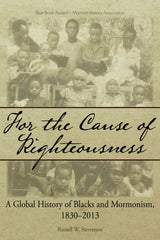 |
MHA Best Book Award For the Cause of Righteousness: A Global History of Blacks and Mormonism, 1830-2013 “Invaluable as a historical resource.” — Terryl L. Givens, author of Parley P. |
 |
MHA Best International Book Award Mormon and Maori “Unflinchingly honest yet unfailingly compassionate.” — Grant Underwood, |
 |
AML Religious Non-Fiction Award Re-reading Job: Understanding the Ancient World's Greatest Poem “A new gold standard for Mormon writings.” — Julie M. Smith, author, Search, |
All 2015 Titles
Here are all of the great titles that Greg Kofford Books published this past year:
 |
Mr. Mustard Plaster and Other Mormon Essays “Vibrant portraits of a kind and loving soul.” — Boyd J. Peterson, author of |
 |
Perspectives on Mormon Theology: Scriptural Theology Each essay takes up the relatively un-self-conscious work of reading a |
 |
Joseph Smith's Polygamy: Toward a Better Understanding “It is a book that will be read and discussed for years to come.” — Robert L. |
 |
Even Unto Bloodshed: An LDS Perspective on War “Indispensable for all future Mormon discussions of the subject.” — Daniel C. |
 |
William B. Smith: In the Shadow of a Prophet “Walker’s biography will become essential reading.” — Mark Staker, author of |
 |
Voices for Equality: Ordain Women and Resurgent Mormon Feminism “Timely, incisive, important.” — Joanna Brooks, co-editor of Mormon |
 |
Traditions of the Fathers: The Book of Mormon as History “Illuminating, prismatic views of the Book of Mormon.” — Mark Alan Wright, |
Looking Ahead at 2016 and Beyond
Here are a few eagerly-anticipated titles currently scheduled for the first part of 2016 and a look at what is in the works for the future:
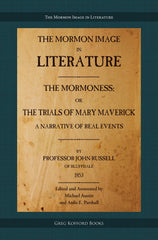 |
The Mormon Image in Literature Series The Mormoness; Or, The Trials Of Mary Maverick: A Narrative Of Real Events Published in 1853, the first American novel about the Mormons is also one of |
 |
The End of the World, Plan B: A Guide for the Future Environmental decline, political gridlock, war and rumors of war, decadence, |
Also forthcoming...
More volumes are in the works for our The Mormon Image in Literature, Contemporary Studies in Scripture, and Perspectives on Mormon Theology series.
Saints, Slaves, and Blacks by Newell G. Bringhurst, revised and updated
Lot Smith: Utah Hero, Arizona Colonizer by Carmen Smith and Talana Hooper
The Trek East: Mormonism Meets Japan, 1901-1968 by Shinji Takagi
Science the Key to Theology by Steven L. Peck
And much, much more...
Thank you for making 2015 exceptional and we are excited about 2016!
Kofford Authors at MHA June 01 2015
Greg Kofford Books authors have long been well-represented as speakers and panel chairs at annual conferences of the Mormon History Association, and the 2015 Conference at the Utah Valley Convention Center in Provo, Utah, June 4-7, is no exception! Check out the titles of their presentations and panels below:
Russell Stevenson, author of For the Cause of Righteousness: A Global History of Blacks and Mormonism, 1830-2013 will present, "We Aren't Africa: Mormonism in Nigeria, 1960-1964."
Joseph Spencer, author of For Zion: A Mormon Theology of Hope will present, "Canon and History: On the Revelation to Emma Smith."
Boyd Petersen, author of Hugh Nibley: A Consecrated Life and Dead Wood and Rushing Water: Essays on Mormon Faith, Culture, and Family will chair theTheology and History panel.
Claudia Bushman, co-editor (with Caroline Kline) ofMormon Women Have Their Say: Essays from the Claremont Oral History Collection will present "Early Decisions," as part of the Exponent II: Present at the Creation panel.
Lavina Fielding Anderson and Newell Bringhurst, editors of Excavating Mormon Pasts: The New Historiography of the Last Half Century will chair a panel and present a paper, respectively. Lavina will chair the Mormon History Journals Editors panel, and Newell will present "President David O. McKay's 1954 Encounter with the LDS Church's Black Priesthood Ban: An Important but Forgotten Episode."
Thomas Alexander, author of Mormonism in Transition: A History of the Latter-day Saints, 1890-1930, 3rd ed. will speak as part of the Culture of the Early Mormon History Association roundtable.
Todd Compton, author (with Leland H. Gentry) ofFire and Sword: A History of the Latter-Days Saints in Northern Missouri, 1836-39 will present "Ganado Mucho, Navajo Headman, and the Mormons."
Don Bradley, author of the forthcoming The Lost 116 Pages: Rediscovering the Book of Lehi will present, "From Cumorah's 'Ark' to Joseph's Hat: Sacred and Mundane Objects in the Emergence of the Book of Mormon."
Christine and Christopher Blythe, editors of the forthcoming Mormonisms: A Documentary History, 1844-1860 will chair panels and present papers. Christine will present, " 'Presiding at Birth:' The Creation of Folk Theologies among Latter-day Saint Women," and she will chair the Mormonism and Material Culture panel. Christopher will present, "Martyrdom Canes and Vernacular Mormonism" in that same panel.
Stuart Parker, author of the forthcoming History through Seer Stones: A Hundred Years of Mormon Pasts will present, "Margarita Bautista's 'Eternal Mexico:' A Revolutionary Mormon proto-Chicanismo."


